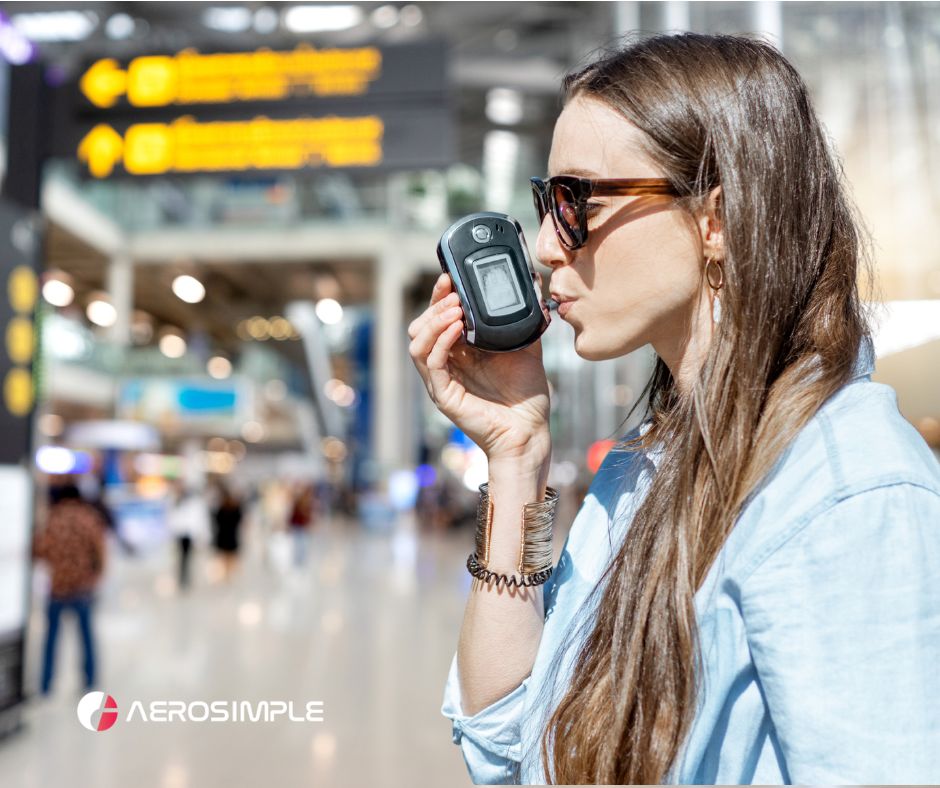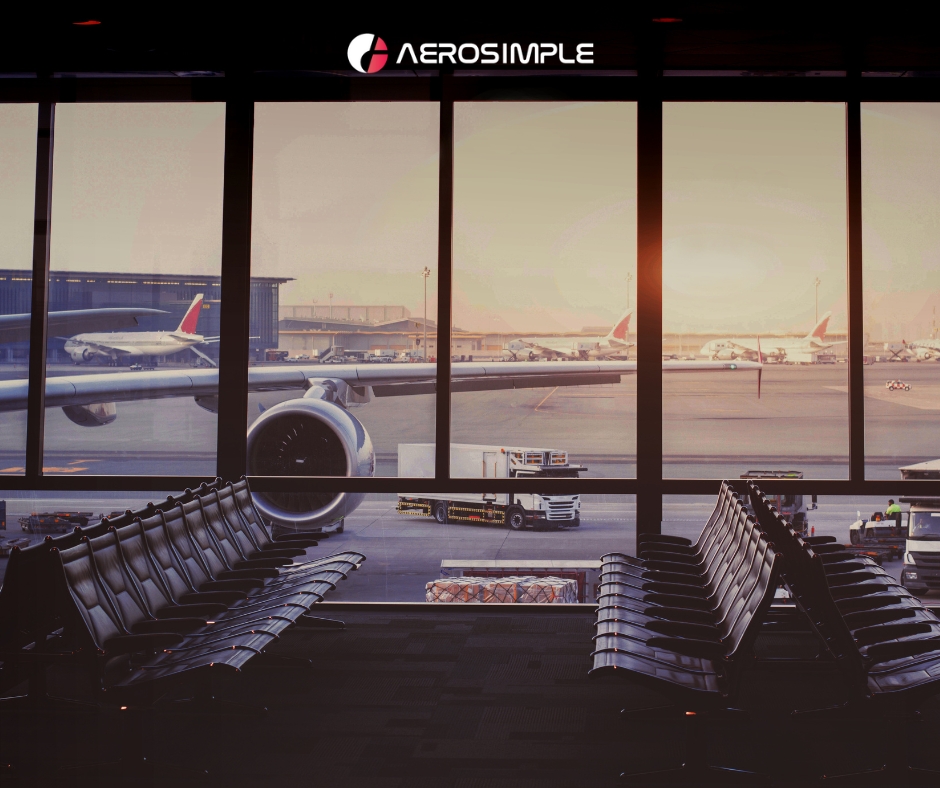Improving Airport Management for Key Personas

Airport facility management is multi-faceted and pertains to the services you offer to passengers, the security of the terminal, and the general operations that keep things running smoothly. All things considered, managing an airport is extremely complex, which is why it takes a strategy and good use of technology to do it efficiently.
Whether you have concerns about airport branding, security, service, costs, growth, or all of the above, you need to invest time into coming up with a strategy and approach that fits your airport's unique needs and goals. Here's how to do it.
Are You Managing Your Airport Effectively?
You don't have to be an airline expert to know that airport management has grown increasingly complex in recent years as security concerns, increased occupancy, and the introduction of tech-driven experiences have come into the picture. It's crucial that you stay ahead of the curve, but the question is: How do you do it?
Modern facility management means understanding and managing challenges and expectations from a myriad of viewpoints, and that's the first step to re-imagining your approach. If you're currently in a place where you feel that your management practices are inefficient, ineffective, or too costly, this guide is what you need to reposition yourself for better outcomes.
The Passenger Viewpoint
You know that every passenger who enters the airport has a series of goals in mind: Check-in, get through security, get to the gate, and takeoff in a timely manner. They don't want any delays, technical difficulties, or long lines along the way, but it's very hard for most airports to eliminate these challenges.
What's more, these basic goals are just the tip of the iceberg. Once you really start thinking from the passenger's perspective, you'll immediately find problems and inefficiencies with your current management. More than ever, passenger experience is tightly coupled with brand perception. What is the first thing passengers see when entering the airport? Is it clean, spacious, updated? Are employees smiling and ready to greet them?
More passengers than ever are choosing to check-in online so they can skip the front desk, but they also arrive with plenty of time to spare — and that just means more time waiting. How long does it take to get through security? Is there a good selection of retail and food options while they wait? What about at-the-gate entertainment?
These may seem like minimal concerns, especially if you're focused on improving security or reducing costs, but they're crucial aspects that any modern airport needs to consider. Additionally, once you begin getting to the root of these challenges, you'll recognize that they are interconnected with the issues of many other personas your airport works with. Naturally, the more people a challenge impacts, the more important it is and, therefore, the more it needs to be prioritized.
Managing passenger expectations is not easy, but it's ultimately the make-or-break element for any airport — it's never an isolated activity. As you think about other ways your airport supports or worsens passenger satisfaction, from the check-in process all the way to baggage claim, also think about these challenges from the following viewpoints.
The Crew Member Viewpoint
To overlook pilots and crew members and their needs when at your airport is akin to a restaurant not accommodating its chef. Without happy crew members who are fed, rested, and ready to fly, the passenger experience will only suffer. Like passengers, crew members require a waiting area and places to eat, shop, and relax.
Unlike passengers, crew members play a role in the operational efficiency of your airport, as well. On-time performance impacts passenger satisfaction, profitability, and efficiency at scale, which is why you need to help all crew members move swiftly through the airport, relax during their free time, and stay on schedule. This happens through a combination of people and processes who are working with an aligned plan.
Ground crews play a critical role in shaping experiences for both the flight crew members and passengers. Their many duties must be completed on schedule to ensure departing flights take off quickly and arriving flights land and get to the gate as fast as possible. When crew members disembark from a plane or arrive at the gate, they require expedited security checks so they can stay on schedule.
If they have downtime, crew members should have a dedicated area or access to a lounge for eating and resting, or at least an expedited pass if they must share resources with general passengers. Audible announcements, well-placed maps, inner-terminal transport, and other features help crew members efficiently navigate the airport just as much as passengers.
The Security Viewpoint
Airport security impacts everyone on the premises. Poor security can put everyone at risk, yet slow security can cause delayed flights by holding up crew members and upsetting passengers by forcing them to wait in line. Ultimately, airport security has perhaps the most difficult challenges when it comes to trying to please everyone, but that is by no means an excuse to stop trying.
Aligning your airport with security regulations is the first step, but consider meeting regulations to be the bare minimum. Your security staff should present themselves with authority, but they should also be polite and knowledgeable so that they can ease the worries of stressed-out passengers and help keep everyone safe and on time.
Aside from using the latest technology to help improve the speed, ease, and effectiveness of security checkpoints, you should also consider investing in staff training. Any airport prioritizing branding and passenger experience will need to take a good hard look at their security staff to ensure they are supporting branding efforts instead of working against them.
The Staff Viewpoint
There are countless staff members that frequent the airport every day, including those working at check-in counters, gates, and inside of retailers and restaurants. These people impact the experience of crew members and passengers, and in turn affect profitability and efficiency.
Like passengers, staff members want to easily pass through security so they can get on with their workday. Like crew members, staff members require extra accommodations to ensure they can keep your airport running efficiently, like an exclusive rest area. Beyond their basic needs, your staff members should also be briefed on your airport's branding efforts.
Since these staff members are often the first and last people passengers interact with while at your airport, it's essential that they offer service with a smile and they should have the necessary knowledge to answer questions or at least direct passengers to someone who can. Reinforcing the role these staff members play in the bigger picture will help them take on a sense of responsibility regarding on-time operations and passenger satisfaction.
The Brand Viewpoint
Modern branding demands that every type of business, be it an airline or the airport that houses it, should work to present an authentic, relatable image that resonates with customers. As an airport, your branding is made that much more complex due to the sheer number of personas you work with, from passengers and crew members to airlines and retailers.
When looking at things from the viewpoint of your own brand, you must remember that while everyone has different priorities, they often converge on the same solutions. For instance, everyone your airport works with would love for foot traffic to move seamlessly through the security checkpoints.
While some services will affect one person's priorities more than another, the most important thing is that your brand identifies central issues and challenges and works to create unique, sustainable solutions for them. For instance, if security is often slow, you may need to allocate more of the budget towards security personnel or additional checkpoints.
Meanwhile, you may also need to invest in your airport's outward image. This entails signage, landscaping, and other beautification efforts, but it also means tying in branding with service goals. For instance, placing digital maps throughout the airport improves the passenger experience while leaving a lasting impression that your airport is invested in modern, efficient operations.
Ultimately, aligning everyone's expectations is truly a matter of priorities. Once you pinpoint the challenges you wish to tackle and identify all the ways a solution benefits the many personas your airport does business with, you will be one step closer to improved operations.
Balancing Expectations for Everyone
In addition to the above, your airport may deal with cargo planes, private pilots, and other groups of personnel who have their own needs and challenges that must be met. Putting it all on paper makes it obvious just how complex it is to manage an airport, which is why taking steps to balance everyone's expectations is paramount to success.
Fortunately, as airport management has grown more complex, tech solutions have been developed to help you overcome these challenges. Aerosimple's all-in-one platform offers an integrated solution to help you manage your airport efficiently while considering the needs of every viewpoint. With a platform that allows you to pick-and-choose features, your airport can design the optimal system for its unique goals.
Are you interested in learning more about Aerosimple and how we can support the needs of your airport? Sign up for a free 60-day trial and see for yourself what the right technology can do for your operations.






















.jpg)









